I have a problem with configuration ( or basic understanding how things work at background). I create a JAVAEE project by checking Web application and ReSt api checkbox ( in intellij with glassfish 5.0). I have sample code below which web methods work but welcome page does not work. My web.xml and sample web service methods are below.
<welcome-file-list>
<welcome-file>index.jsp</welcome-file>
</welcome-file-list>
<servlet>
<servlet-name>Jersey Web Application</servlet-name>
<servlet-class>org.glassfish.jersey.servlet.ServletContainer</servlet-class>
<init-param>
<param-name>jersey.config.server.provider.packages</param-name>
<param-value>test</param-value>
</init-param>
<init-param>
<param-name>com.sun.jersey.api.json.POJOMappingFeature</param-name>
<param-value>true</param-value>
</init-param>
<load-on-startup>1</load-on-startup>
</servlet>
<servlet-mapping>
<servlet-name>Jersey Web Application</servlet-name>
**<url-pattern>/ *</url-pattern>**
</servlet-mapping>
@Path("/RestTest")
public class TestString {
@Context
ServletContext context;
@GET
@Path("insertdb/{param1}/{param2}")
@Produces(MediaType.APPLICATION_JSON)
public Object writeToDb( @PathParam("param1") String param1
,@PathParam("param2") String param2){
try{
String password= context.getInitParameter("DbPassword");
Class.forName("org.mariadb.jdbc.Driver");
Connection dbCon = DriverManager.getConnection(
"jdbc:mariadb://xxx/testdb", "root", password);
PreparedStatement stmt=dbCon.prepareStatement(
"INSERT INTO TestTable VALUES(?,?)");
stmt.setString(1,param1);
stmt.setString(2,param2);
stmt.executeUpdate();
dbCon.close();
return "Success";
}catch(SQLException | ClassNotFoundException ex){
return ex.toString();
}
}
@GET
@Path("sum/{sum1}/{sum2}")
@Produces(MediaType.TEXT_HTML)
public String calculateSum(@PathParam("sum1") int param1
,@PathParam("sum2") int param2){
return ""+(param1 + param2);
}
If i change this line url-pattern "/*" to "/" then welcome page is accessible but not methods.
Thus what i want is, having a welcome page which i will use for documentation for my web services(i dont want SOAP) and web methods must work by adding / to base url. How can i achieve that and what is difference between /* and /
